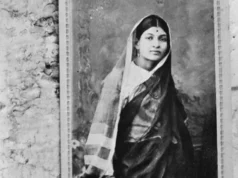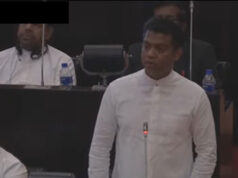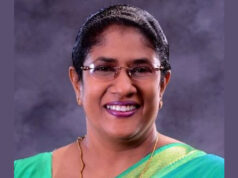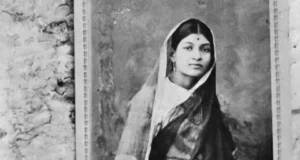ECONOMYNEXT –Sri Lanka’s red rice which disappeared from shop shelves after price controls were strictly enforced, was due to the ex-President Ranil Wickremesnghe distributing rice, Trade Minister Wasantha Samarasinghe claimed.
“The last government before the Presidential election did a dastardly (Alu-goth-theru, thaka-thiru wedak) before the presidential election,” Samarasinghe told parliament.
“They took red rice from mills in the South paying 10 rupee extra (per kilo) and distributed it around the country.”
“They gave red rice to people who do not usually eat it,” he claimed.
Red rice was mostly eaten by Sri Lankans in the South and the Ratnapura district, he claimed.
Sri Lankans consume about 2.4 million metric tonnes of rice a year, according to government data. This works out to 200,000 metric tonnes a month.
People also consumed about 100,000 metric tonnes of wheat, he said.
About 65 percent of the rice grown by farmers was Nadu (white grain used for par-boiled rice) and about 15 percent was kekulu rice according to Minister Samarasinghe.
About 15 percent was Samba and about 4 to 5 percent was Basmati rice used in hotels, he said.
Last year the paddy harvest from two seasons was 4.9 million metric tonnes according to official estimates, which should have given 2.9 million metric tonnes of milled rice, he said.
This should have resulted in a 500,000 tonne surplus, he said.
When rice prices went up towards the end of the year, (which happens in many years) ahead of the Maha harvests due to import controls, a narrative was initially spread that a ‘mafia’ of millers was hiding stocks.
“Now we know that there are no stocks,” he said.
Minister Samarasinghe said mills in the North Central, East and South were all checked.
It is a basic economic principle taught in first year economics that when a price control is set below the market clearing price goods go off the shelves and a ‘black market’ is created at the market clearing price.
The black market at which red rice is available is now around 270 rupees a kilo, compared to a price control of 220 rupees.
The Consumer Affairs Authority had embarrassed several governments and put consumers in difficulty with its price controls in the recent past.
In 2021 as the central bank printed money and prices went up, the then government also slapped price controls. But later, then Trade Minister Lasantha Alagiyawanna, realized the problem and apologized to the public for putting them in difficulty.
“We admit that the price controls created shortages,” Minister Alagiywanna said at the time in a very rare occurrence. “We apologize for the inconvenience caused to consumers. But the government did this with the best intentions.”
Authorities initially claimed that Nadu rice was being hidden by the ‘mafia’ and slammed a price control for Red rice ten rupee below.
An examination of past data shows that red rice price overtook that of Nadu and went close to the premium Samba rice in December as New Year demand went up and stocks ran down.
By setting a ceiling price below the market clearing price, a government can create a shortage in any good.
Chicken were also implicated in the rice crisis, he said.
A legislator interrupted to suggest that perhaps Minister Samarasinghe’s statistics were not correct.
“I was just going to get to that point,” Minister Samarasinghe said. “On one side there was a red rice shortfall, because red rice was distributed to those who did not do it.
“In Sri Lanka there are 125 lakhs of layer chicken. They have 80 lakhs of chicks. This industry buys 300,000 metric tonnes of rice a year.”
Red and white raw rice is also made into flour. There was also an ornamental fish industry that needed feed, he said.
“So, our departments, our institutions should reduce this from the harvest,” he said.
However, chickens have been farmed in previous years as well. Sri Lanka has government controls not only imports of rice but maize as well, which is the key ingredient of animal feed.
The current administration also relaxed the import of rice, but did not take off the tax which amount close to 50 percent of world prices.








